site search
online catalog
FACE TO FACE WITH JOHN S. MOSBY! INSCRIBED BALLARD CARBINE OF MAJOR DOUGLAS FRAZAR, 13th NEW YORK CAVALRY

Hover to zoom

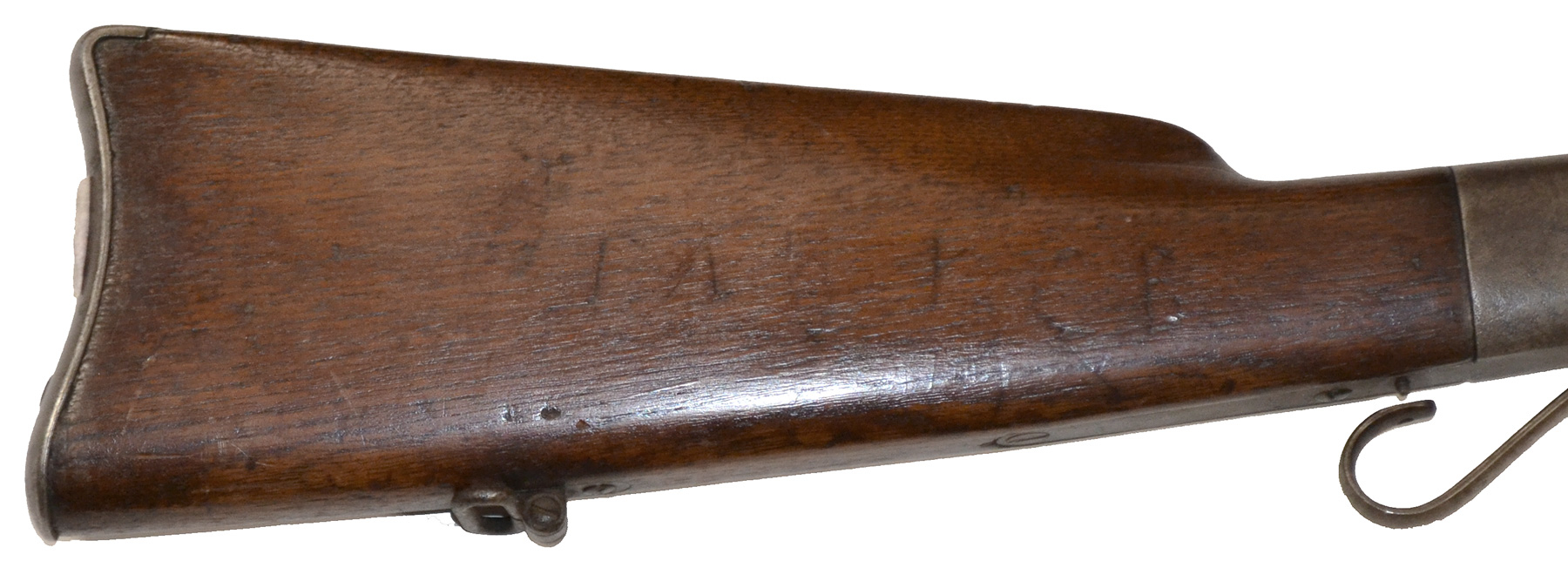





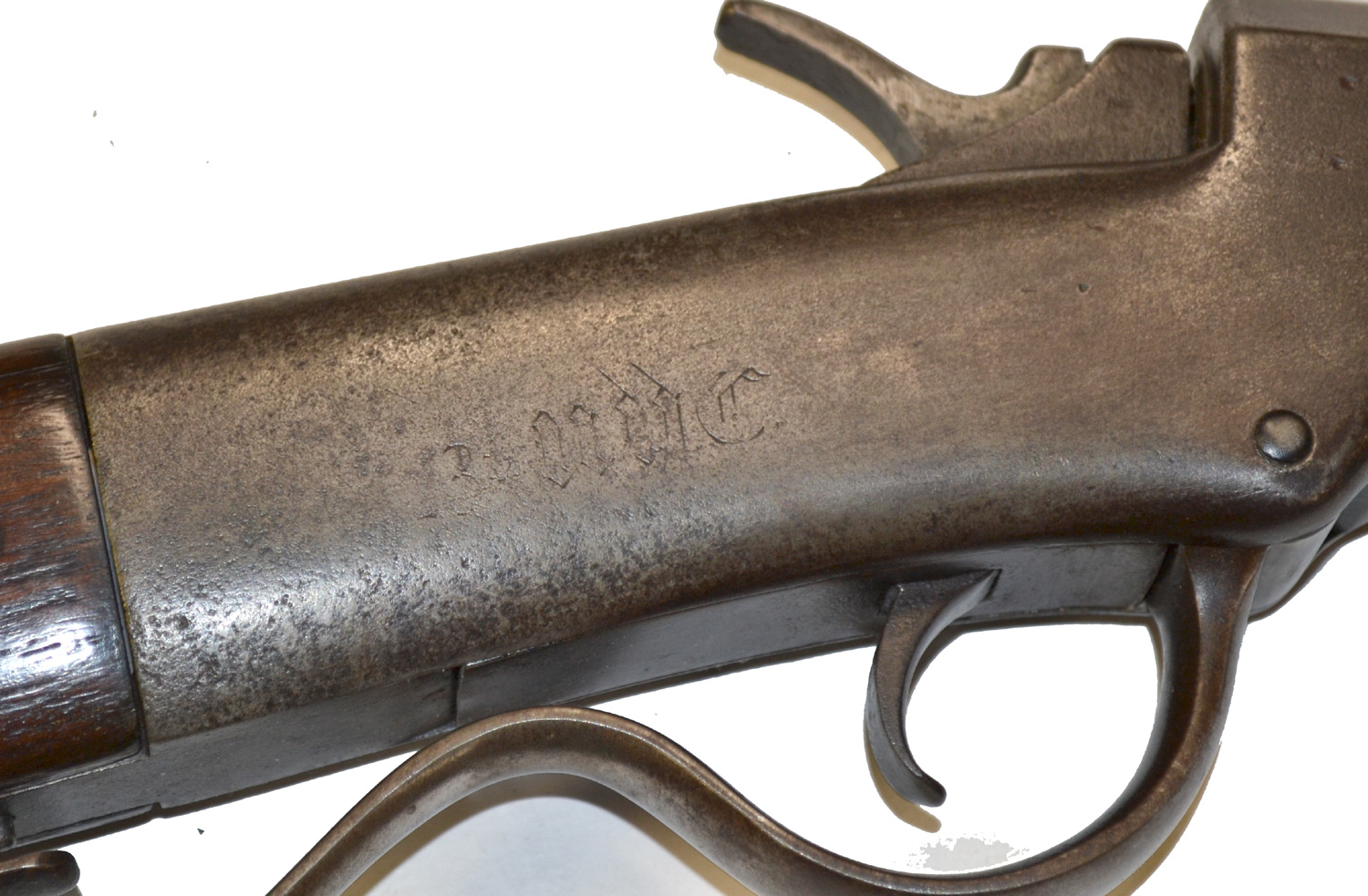


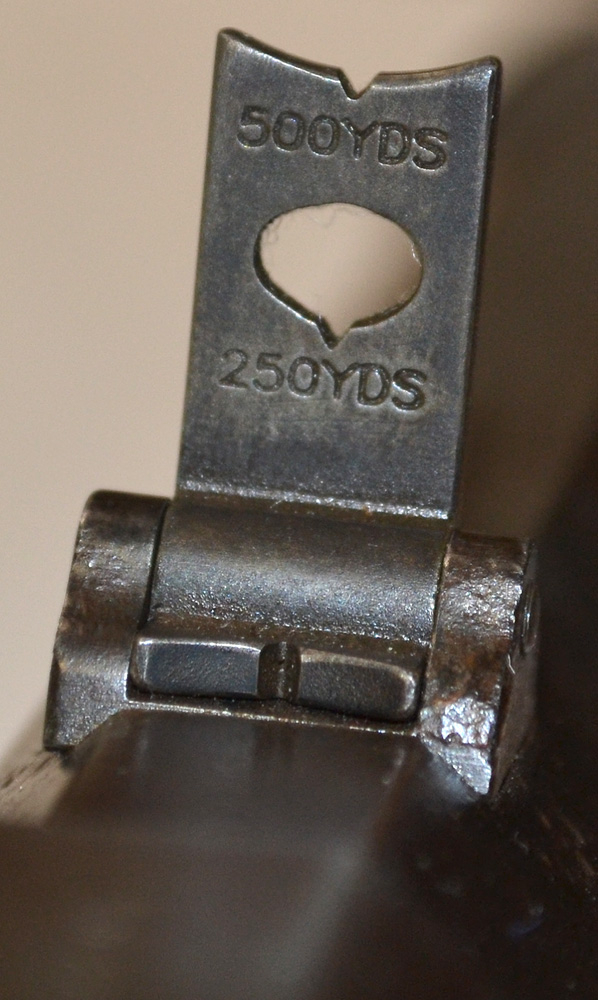

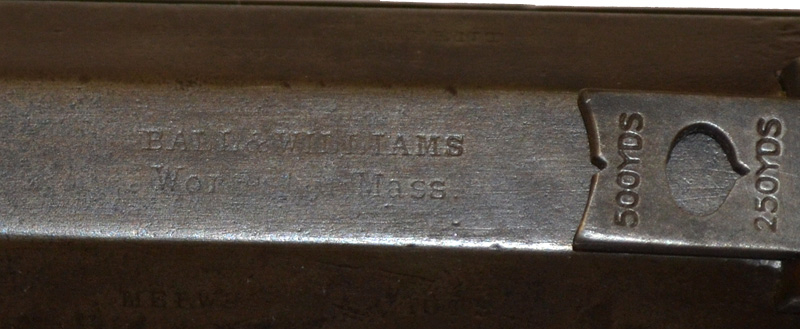
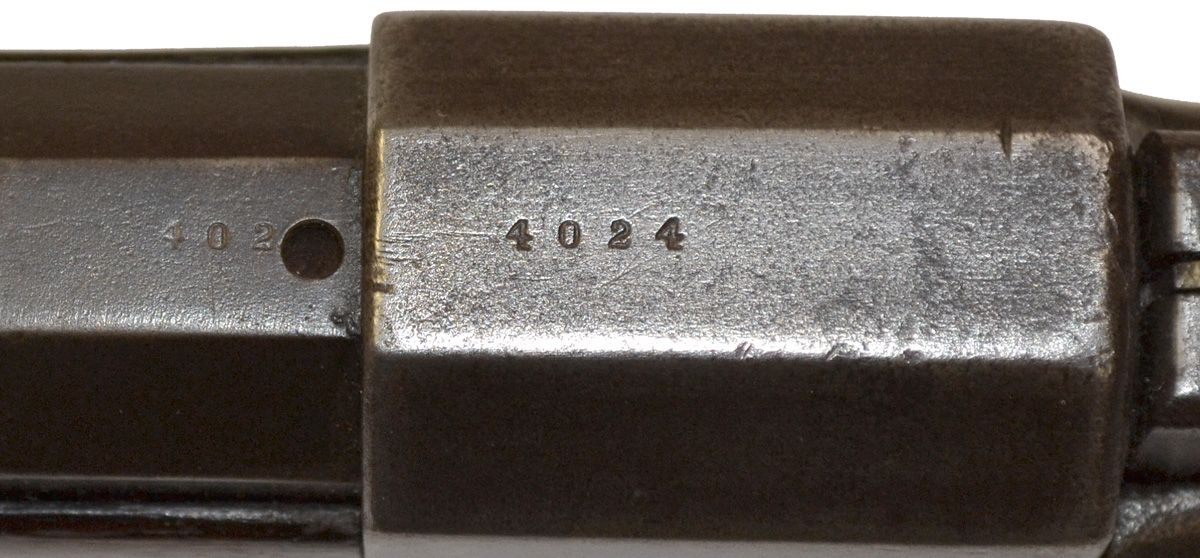

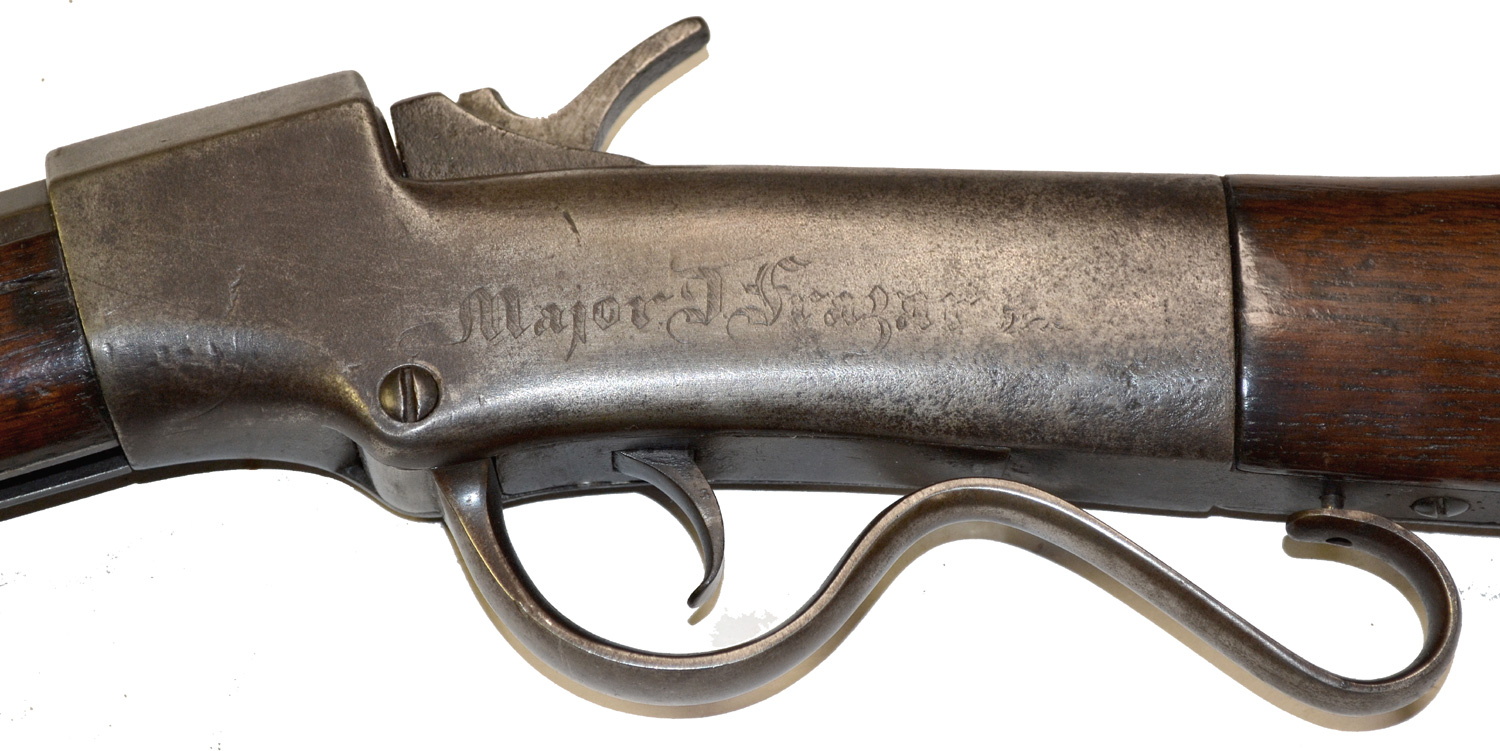
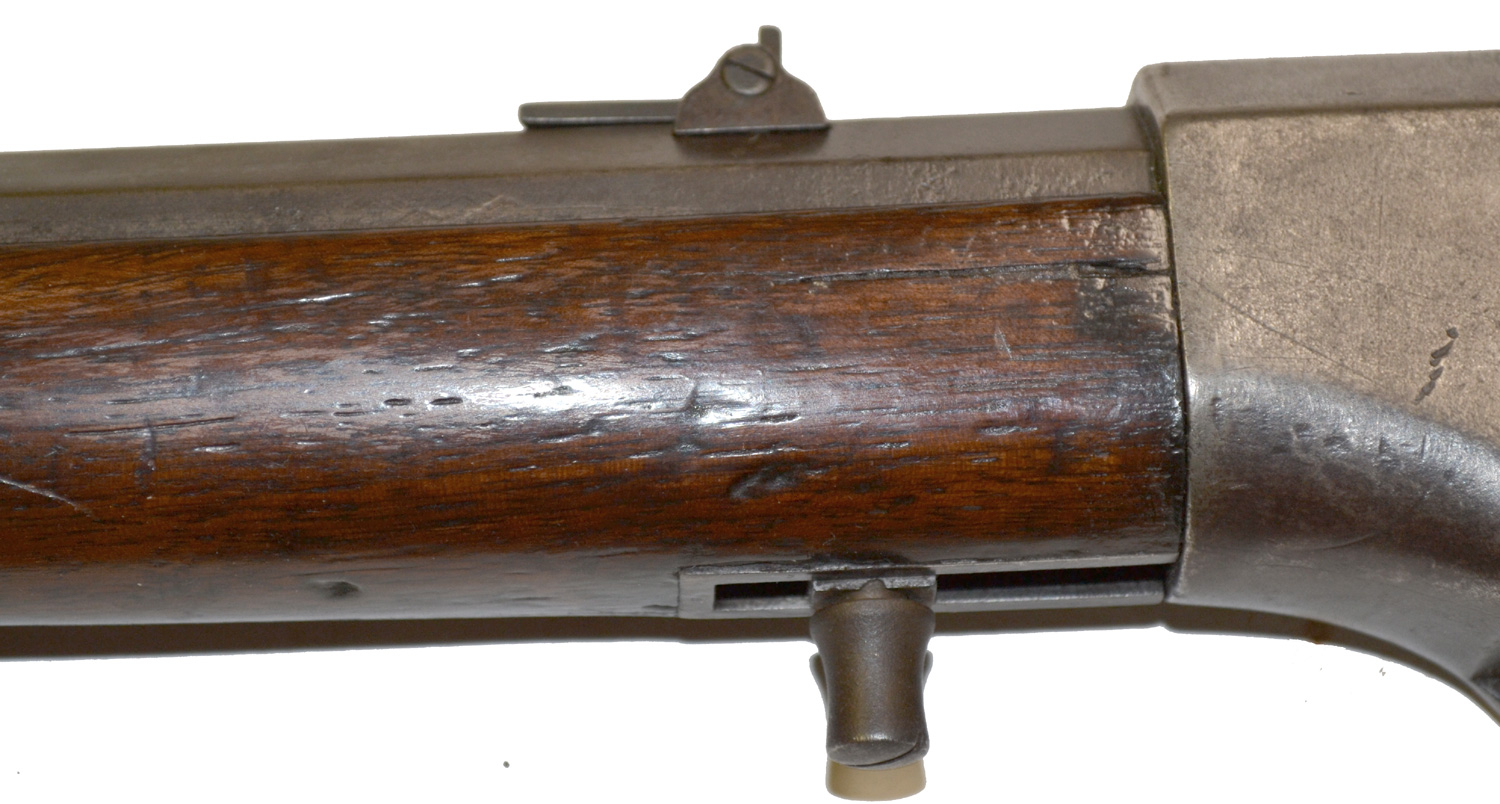
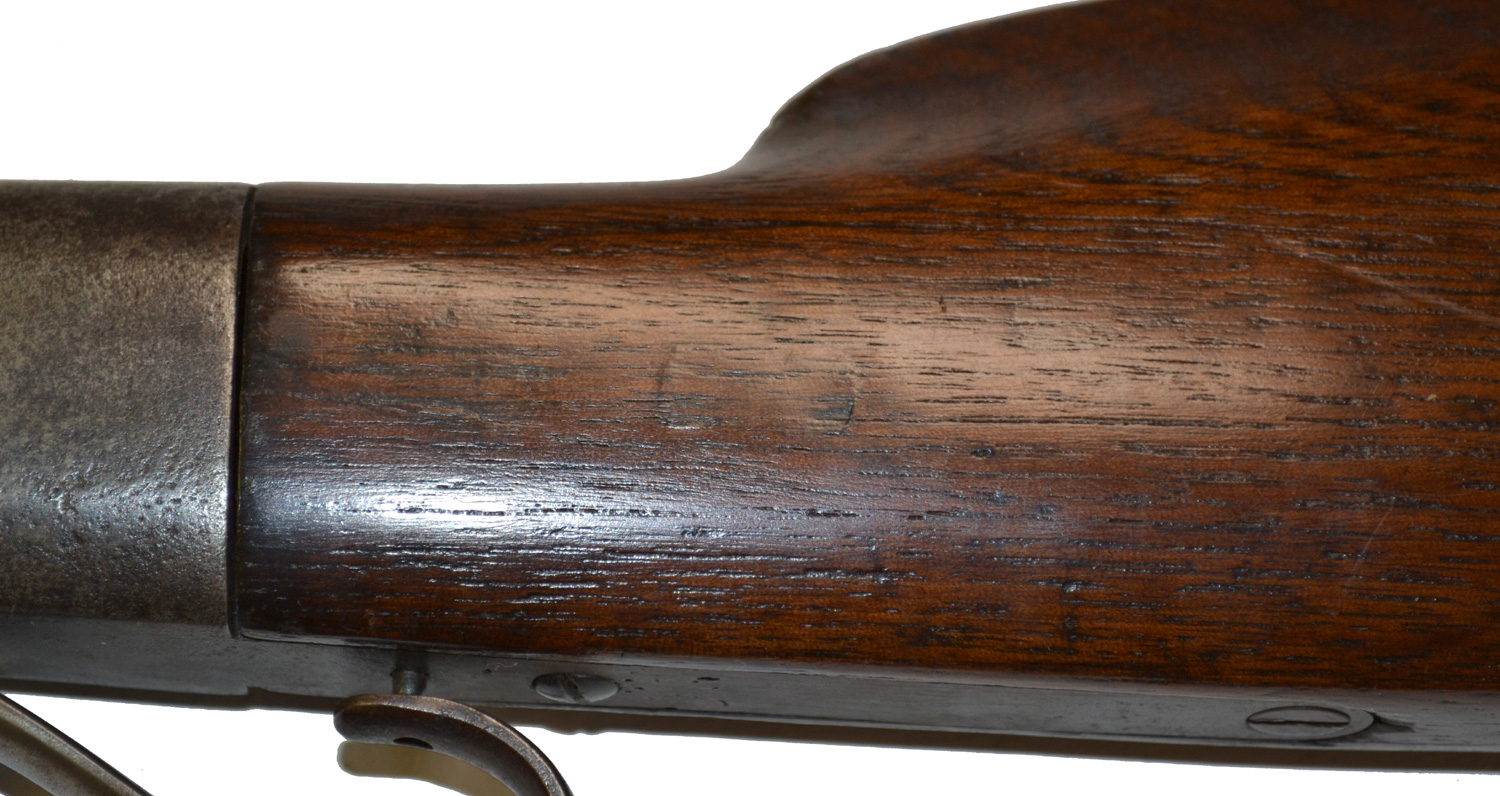
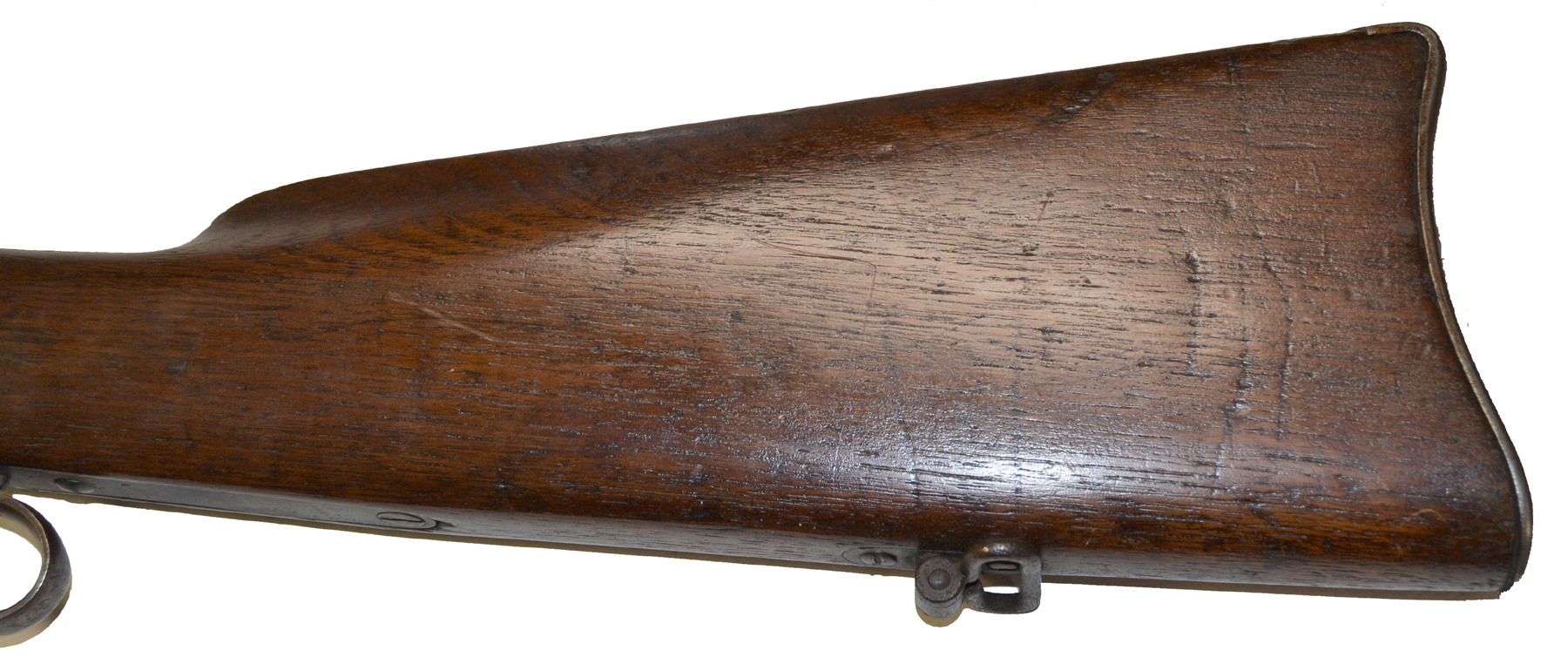

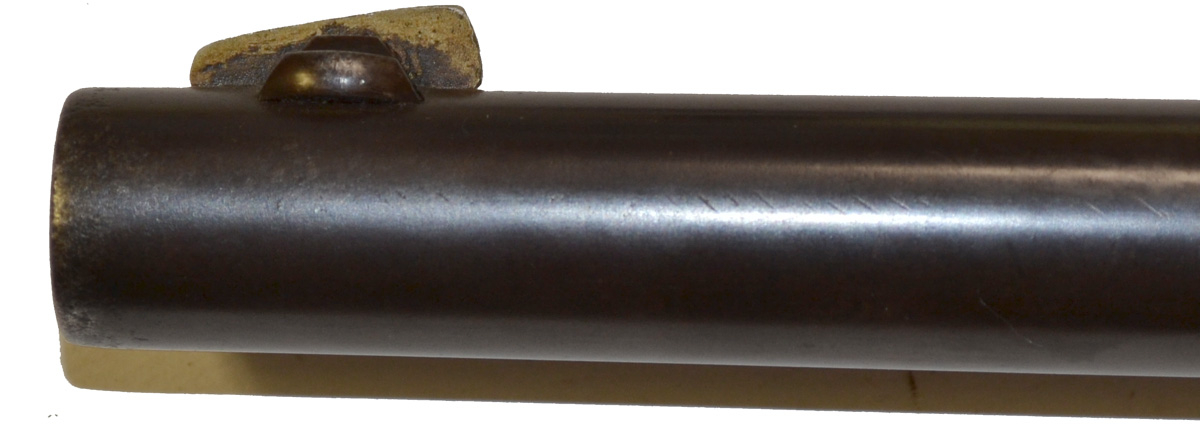
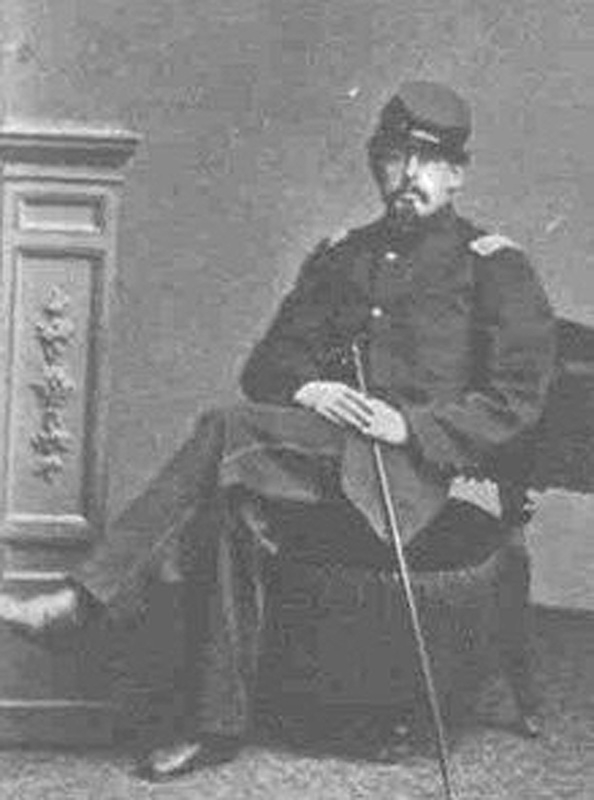
$8,500.00 SOLD
Quantity Available: None
Item Code: 218-531
An officer in the 13th NY Cavalry might really want to carry a carbine: the regiment was actively engaged in dozens of patrols, expeditions, and small unit actions, particularly against John S. Mosby, so firepower was important. Major Douglas Frazar, who carried this carbine, came face-to-face with Mosby and literally had his hands on the famous cavalryman in December 1864 when Mosby had his closest scrape with death.
This is a very good condition .44 caliber rimfire Ballard carbine. Kentucky bought at least 4,000 from Ball and Williams, the earliest and largest maker; New York bought about 500; commercial firms like Schuyler, Hartley and Graham offered them; and the U.S. government found itself priced out of the market, getting only about 1,500 out of contract for 5,000. They were robust and well-regarded weapons: one colonel refused to turn his in, even temporarily, fearing he would be reissued something inferior.
This one has smooth metal overall and the octagonal-to-round barrel shows about 90 percent thin blue-turned-plum color. Both sights are in place. The barrel is marked, “Ball & Williams / Worcester Mass.,” and the breech shows a crisp serial number 4024 on the top (the proper location up to serial #9000,) which is pretty early in the production run of some 15,600 Ballards of different models made by the company from 1862 to 1865. The hammer and trigger show some case color. The wood-to-metal fit is tight. The wood has a warm brown tone with a few dark spots with good surface under a later varnish. There are some minor dings and scratches, and a little wear at the toe of the butt. The right butt flat shows some letters or initials that are lightly scratched in and undecipherable. The left flat shows some cross-wise scratches or rubs that are likely saddle wear. The mechanics are good. The rifling is good, but could be scrubbed out. The receiver and frame, originally blued, show a mix of muted silver and dark gray. The left side of the frame is professionally engraved in Old English lettering: “Major D. Frazar,” and the right side reads, “13th NYC,” a little light at the beginning, but legible.
Born in Duxbury, Mass.,19 August 1836, Douglas Frazar was sailor, traveler, businessman, soldier, author and lecturer. Educated in Boston and Paris, he joined his father in the East India trade, learning from the ground up as a sailor and at age 21 sailed from Boston as master of the barque “Maryland,” setting up a commission house, “Frazar & Co.” in Shanghai in 1859. He returned to America when the war started and was appointed a major in the 13th New York Cavalry 20 June 1863 with recommendations from the Governor of Massachusetts and Charles Sumner, among others, mustering in on August 3. The regiment was assigned to the Independent Cavalry Brigade of the 22nd Corps in the Department and Defenses of Washington, and posted first at Centreville and then at Vienna, Va., but operated over a large area south of the Potomac, as far down as Culpeper and Fauquier Counties and out to the Blue Ridge Mountains. They were tasked with securing railroad lines and supply routes, and countering Confederate guerrillas and partisan troops, most particularly those of John S. Mosby, with whom they fought some larger fights like Aldie, where the 13th lost 24 in killed wounded and missing, but more often wore out horses and men in constant patrols, expeditions, small unit actions and encounters, where they lost men in killed, wounded and prisoners on some 60 occasions by CWData’s reckoning.
In late 1864 the brigade was reorganized as the “First Separate Brigade” under William Gamble, consisting of the 13th and 16th NY Cavalry along with the 8th Illinois, two infantry units and a battery of light artillery. On December 20, acting in coordination with some movements by Sheridan, Gamble sent out an expedition of 1,000 of his best-mounted cavalry under Lt. Col. Clendennin of the 8th Illinois to White Plains and Middleburg. During the march Frazar was sent in command of his detachment of 300 men from the 13th NY and another 300 from the 16th NY to take a separate road and rejoin Clendennin at Martinsburg. Mosby, attending a wedding nearby, heard of enemy cavalry in the area, scouted Frazar’s column, which halted and appeared to make camp around dusk, and then sent word for his men to gather for a dawn attack.
Mosby himself described the weather as cold, with a drizzling rain, icicles hanging from trees and the road covered with sleet. While Frazar’s troops warmed themselves on the outside with campfires and on the inside with whiskey, Mosby and one companion halted near Rector’s Crossroads at the house of Ludwell Lake, known for setting a good dinner table. But, while Mosby took his boots off and enjoyed the hospitality of the house, Frazar resumed his march and his advance guard, alerted by two horses tethered outside, surrounded Lake’s house about 9:00 p.m. When the first Federals entered the room, Mosby posed with his hands concealed the rank insignia on his sack coat and the conversation was cut short a moment later by some of the troopers outside firing at the figures visible through the window. One bullet struck Mosby in the lower abdomen, and he had the presence of mind to add to shout, “I am shot” to add to the chaos of overturned tables and doused lights as the Union troopers scrambled out of the room. He hid his coat in a neighboring bedroom and although actually thinking the wound likely mortal, played the part of a mortally wounded lieutenant to avoid being taken prisoner. Frazar later reported:
“Several shots were fired, and I was informed that a rebel lieutenant was wounded. I immediately dismounted and entered the house, and found a man lying on the floor, apparently in great agony. I asked him his name - he answered, "Lieutenant Johnson, Sixteenth Virginia Cavalry." He was in his shirtsleeves - a light blue cotton shirt - no hat - no boots - no insignia of rank; nothing to denote in the slightest degree that he was not what he pretended to be. I told him I must see his wounds to see whether to bring him or not. I opened, myself, his pants and found that a pistol bullet had entered the abdomen about two inches below and to the left of the navel; a wound that I felt assured was mortal. I therefore ordered all from the room, remarking, "He will die in twenty-four hours." Being behind time on account of skirmishing all the afternoon with the enemy, I hurried on to meet Lieutenant-Colonel Clendenin at Middleburg, according to orders received. Nearly every officer in my command, if not all, saw this wounded man, and no one had the slightest idea that it was Mosby. Captain Brown and Major Birdsall were both in the room with me when this occurred.”
Only at Middleburg, when Frazar was shown Mosby’s hat, bearing a gold star, did he suspect he missed something bigger than a wounded Confederate lieutenant home on leave. Mosby escaped search parties and eventually recovered, the ball having circled his abdomen and not pierced his intestines. Frazar remained on active duty, though perhaps embarrassed. A letter from Mosby to Frazar written in the 1880s, and in the family papers at Duxbury, may have soothed his feelings.
Frazar mustered out of the 13th on 26 March 1865, to accept a commission as Colonel 104th USCT, where his field officers included Henry Hamilton Wilson, son of the Grant’s future vice-president, and Martin Delaney, one of the very few black commissioned officers in the army. He mustered out 5 March 1866 and until 1870 served in Virginia in the U.S. Bureau of Refugees, Freedmen, and Abandoned Lands, (the “Freedmen’s Bureau,”) which provided practical assistance to former slaves, succeeding to a degree in education and medicine, but thwarted in civil rights. Robert E. Lee, as president of Washington College wrote to Frazar, that he had no authority to order a student to make good on a debt to a local freedman.
Frazar’s business went under in the panic of 1873, and he was later employed as a city auditor, common council clerk, and auditor for the Boston & Maine and Eastern Railroads. He also put to use his travel and nautical experience in lectures and writing, including “Practical Sailing,” “The log of the Maryland,” and “Perseverance Island,” an updated Robinson Crusoe yarn with some science fiction thrown in. He and his wife also ran personally guided tours to Europe and at least one European guidebook was published in her name. Frazar died in 1896.
This carbine has a nice, dead-real inscription and one of the more interesting history we have seen lately, particularly if you are interested in Mosby and the devil of a time he gave Federal troops. [ph:L]
~~~~~~~~~~~~~~~~~~~~~~~~~~~~~~~~~~~
THIS ITEM, AS WITH ALL OTHER ITEMS AVAILABLE ON OUR WEB SITE,
MAY BE PURCHASED THROUGH OUR LAYAWAY PROGRAM.
FOR OUR POLICIES AND TERMS,
CLICK ON ‘CONTACT US’ AT THE TOP OF ANY PAGE ON THE SITE,
THEN ON ‘LAYAWAY POLICY’.
THANK YOU!
Inquire About FACE TO FACE WITH JOHN S. MOSBY! INSCRIBED BALLARD CARBINE OF MAJOR DOUGLAS FRAZAR, 13th NEW YORK CAVALRY
Most Popular
Historical Firearms Stolen From The National Civil War Museum In Harrisburg, Pa »
Theft From Gravesite Of Gen. John Reynolds »
Selection Of Unframed Prints By Don Troiani »
Fine Condition Brass Infantry Bugle Insignia »
Large English Bowie Knife With Sheath 1870’S – 1880’S »
Imported (Clauberg) Us Model 1860 Light Cavalry Officer's Saber »
featured item
THIRD VERMONT INFANTRY NCO'S UNIFORM GROUPING
The offering consists of not only a federal soldier's frock coat, vest and trousers but a revolver, a corps badge and a host of personal items wartime and postwar. William W. Hendrick from Concord Vermont enlisted in the 3rd Vermont Infantry on June… (1268-270). Learn More »


